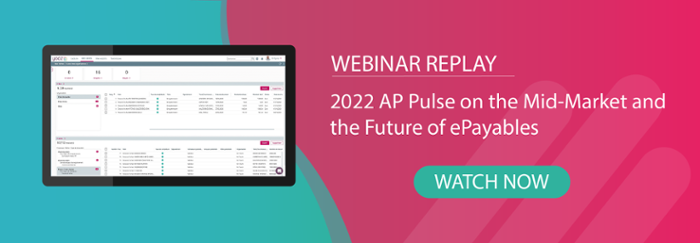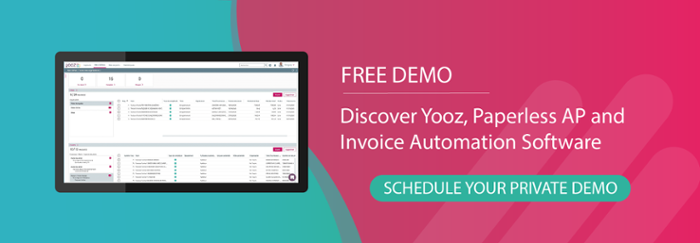The global pandemic has been a wake-up call for many businesses, forcing them to take a hard look at their operations and find ways to become more efficient and agile. This is particularly apparent in the payments sector, where not just retail but also institutional investors are benefiting from the race to adopt new technologies, such as mobile payments, cloud-based banking, and customer segmentations. Even the government is transforming processes as part of this digitalisation in finance, such as evident in the eInvoicing and Making Tax Digital (MTD) initiatives.
However, although many finance departments have adopted some form of digital solution tools customer-facing processes have prevailed, digitalizing far more quickly than the back-office, non-client-facing functions. Just consider how easy it has become to make purchase online from anywhere, conduct banking transactions, or a myriad of other operations.
This drive towards a real-time, self-service model is becoming the norm. For any organization, this means that the time has come for change.
What is digital finance transformation?
Simply put, digital transformation is the integration of digital technology into business functions, changing how organizations operate and deliver value. It is a way to rethink the standard operating models to become more agile and competitive.
Finance digital transformation specifically is the reshaping of the finance and accounting functions using technology, creating a more efficient and streamlined operating process. It is how the finance function becomes more autonomous, able to do more and drive the strategic ambitions of a company from anywhere at any time. Some benefits include:
- Increased efficiency: data becomes more accurate and timelier, creating a data-analytics based environment where decisions can be based in real-time information.
- Faster processes: automating transactions and centralizing data means a more streamlined, faster process with less repetitive tasks.
- Reduced errors: duplications and data entry errors are reduced or caught at the beginning of the process rather than during or even after payment.
- Improved cash flow: financial process automation reduces or eliminates late payments which, when combined with faster payment processes, means an increase in working capital.
- Cultural transformation: not only does a finance digital transformation implement technical changes, but it also creates an entirely new cultural environment. People learn new skills and become more tech savvy, teams collaborate easier, and the focus shifts from a task based to strategic focus.
Finance digital transformation can occur in multiple ways and at scale, from migrating to cloud-based software (SaaS), utilizing digital platforms to centralize information, and making real-time data analytics a standard practice. All possible through the implementation of modern technology.
Why is financial transformation needed?
As technologies continue to evolve and the business environment becomes increasingly more digital, the finance function needs to transform into an operation that meets the needs of the organisation. CFOs and other finance leaders must reimagine their organisation structures, taking into account factors such as remote or mobile working environments, evolving regulations and legislations, as well as changes in the supply chain and services.
Failing to appreciate these factors and others, as well as how finance digitalization can enhance business operations, risks inefficiency and possible business failure.
5 strategies for finance digital transformation
Digital transformation brings huge opportunities when successfully implemented. The top 5 ways to achieve it?
1.Build an effective roadmap
A successful finance transformation depends on building a roadmap that maps your processes and the transformation journey in detail. It identifies the pain points and defines the steps that are needed to overcome them. An effective roadmap will address alignment (aligning the finance strategy to your actual business versus industry benchmarks or standardized formats), prioritization (allocate resources to those areas that deliver the most value) and managing expectations (both internally and externally).
2. Establish data analytics
Data analysis is key to discovering patterns and observing trends. Having this information helps organizations to anticipate the future and identifying the most effective strategies, including identifying the right technologies for your digital transformation.
3. Invest in the right technologies
Ignore what everybody else is doing, you need to focus on identifying the right technologies for your specific needs including both business goals and budgets. Finding and investing in the right technology is crucial for success. One such key area for finance is in end-to-end accounts payable automation due to it's impact throughout entire organizations.
4. Conduct research
The digital landscape is constantly changing. Taking a research-based approach to your finance digital transformation will enable you to learn from other experiences and help to optimize the transformation journey. Some ways to do this include learning from other businesses (especially competitors), attending live conferences and seminars, subscribing to information material such as newsletters and journals, and of course keeping up to date on the latest regulatory and any legislative requirements. All of these will help to gain more accurate insights to help speed the journey.
5. Get employee buy-in
A key part of implementation is creating a digital culture, including management ensuring that employees will feel valued and that their role not threatened by the new technologies. Think about how you are going to communicate with the different teams and how the change will benefit them.
Next steps
Digitising is key to the future of finance however you don’t have to undergo your finance digital transformation alone. After all, a digital finance transformation system can - and should - be a change for the better.









